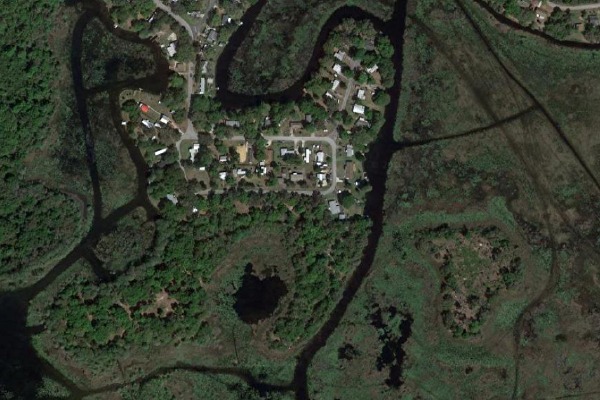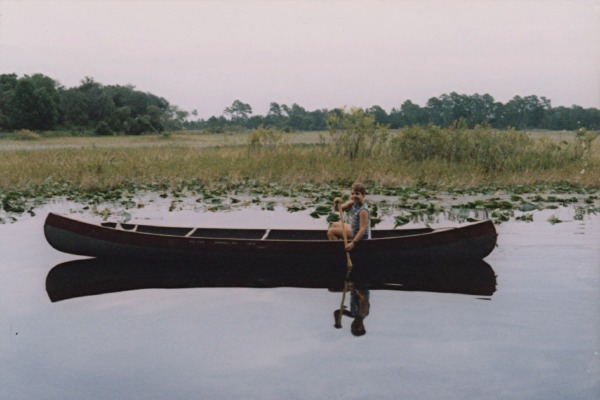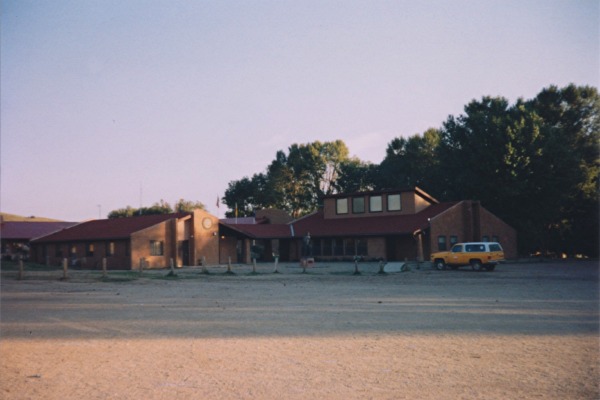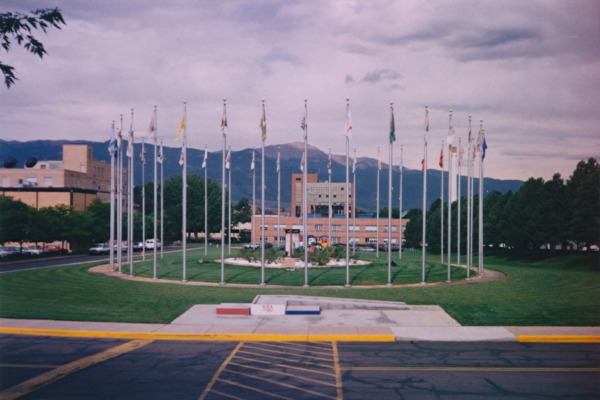Philmont 727-E1-1994 – 8 August 1994
Philmont Expedition 727-E1-1994 – 8 August 1994: Have Canoe, Will Paddle / Day +1: Along for the Ride
Have Canoe, Will Paddle
Canoeing was my favorite waterfront activity. My brother preferred fishing. On vacation in 1987, we were staying with a former neighbor at his home in Florida. The property was on a swampy waterfront, perfect for both activities.

Seems perfectly safe…
I told my father that I wanted to go out in the canoe. He thought that was a good idea and told me to go ahead and take it out. By myself. I had never gone solo canoeing before. I was nine. But if he thought it was a good idea….
To this day, I don’t know what made him suggest it. Did he think I was up to the challenge? Did he not think it through? We’ll never know. But there I was, paddle in hand, looking out on the unfamiliar waters. I guess I was doing this.
It should have been an enjoyable experience, but I was too anxious to enjoy it. Where was I going? Was I going to get lost? When should I turn back? Could I even find my way back? Is there anything dangerous out here I should be aware of? And just how do you work this thing with only one person?

Me 1, Alligators 0
As much as I wanted to spend the entire afternoon on the water, worry made me turn back sooner than I would have liked. I arrived safe and uneaten. Back on land, my father asked if I had used the J-stroke. I had no idea what that even was. Maybe he should have mentioned that before sending me out into a random Florida waterway by myself?
I would finally learn the J-stroke 5 years later when I took Canoeing merit badge. But I never really had to use it in a practical setting.
The bulk of my canoeing was done on my troop’s annual canoe trip on the last day of camp. We went down about 10 miles of the nearby Delaware River. Canoes were operated in pairs, as was typical. The trip was always different; water levels on the river varied from year to year, ranging from having spots where you needed to get out and walk to sections of significant rapids. Either way, it was an enjoyable way to end the week at camp.
As long as I was in the back seat. Despite looking equivalent from the outside, the functions performed by the different seating positions in a canoe are almost nothing alike. In the front, you’re more responsible for spotting hazards (usually helpfully noted by the colored streaks left by fiberglass canoes that had hit them) and making fine adjustments to heading. In the back, you’re more responsible for providing power and making coarse heading adjustments.
My first time on the Delaware, I was in the front with my brother in the back. I was miserable. The weight difference put me higher above the water, making it harder to get my paddle firmly in the water. And the constant criticism I was getting didn’t help any. It was one experience I had no desire to repeat. From then on, I only paddled in the back. And everything went well. Mostly.
One year, the water level was unusually high and there were some serious rapids in a couple of sections. At one point, we were sent through one at a time and told to aim for a chute between two rocks. If we hit it, it would take us through without a problem. If we missed, we could get stuck. When it was our turn, we couldn’t see the chute. So we missed it. And we got stuck.
With no obvious way to get back on track, we could only watch as canoe after canoe went through the chute. Everyone had a blast. Except for us. Eventually, we got out of the area we were stuck in and rejoined the group.
In a canoe, you have control over where you go. Water and rocks may get in your way, but, ultimately, you are responsible for your own success or failure. As it should be.
Day +1: Along for the Ride

As we left Philmont behind, we still had a day packed with activities before it was time to head home. Also, more all-you-can-eat buffets, which we were eagerly awaiting after nearly two weeks of trail food. The “eat what you take” rule remained in effect, but there was little that we wouldn’t be able to eat in our current state.
So we ate lots of food and tried out some tricks we had learned from our challenge course instructor on the Dutchess County Council Scouts. As much fun as our trek had been, we were glad to be back in civilization.
Our first activity of the day was whitewater rafting. We had never gone rafting before, so this was sure to be exciting. After gearing up and getting the requisite safety instruction, we hit the rapids.
The rest is mostly a blur. Unlike a canoe, a raft doesn’t lend itself to being controlled by any one person. Or even all of the people. A bunch of paddles flailing about don’t amount to a hill of beans compared to the force of the current. It was all we could do just to keep from flipping over. We might as well have been strapped into an amusement park ride.

Next, we visited the U.S. Olympic Training Center. There wasn’t a whole lot to see. We saw some target shooters practicing, which should have been interesting (I had won our troop’s summer camp rifle shooting contest in 1992 and Keith had won in 1993), but the process was strangely robotic. It made becoming an Olympian seem quite unappealing. As for the rest of the tour, I only know what we saw from the photos I took. And most of those were destroyed when my camera jammed (again…). After this roll of film, I would never use this camera again.
Our day ended on a gym floor in Cañon City. But not before one last thing. One of the adults had seen a two-screen movie theater on the way here. We had enough time to see a movie, if we were interested. There was a choice of Forrest Gump or something else. Forrest Gump won and we had one final adventure. Then it was back to the gym floor for the night.
Next: 9 August 1994: Day +2: Homecoming / Aftermath
